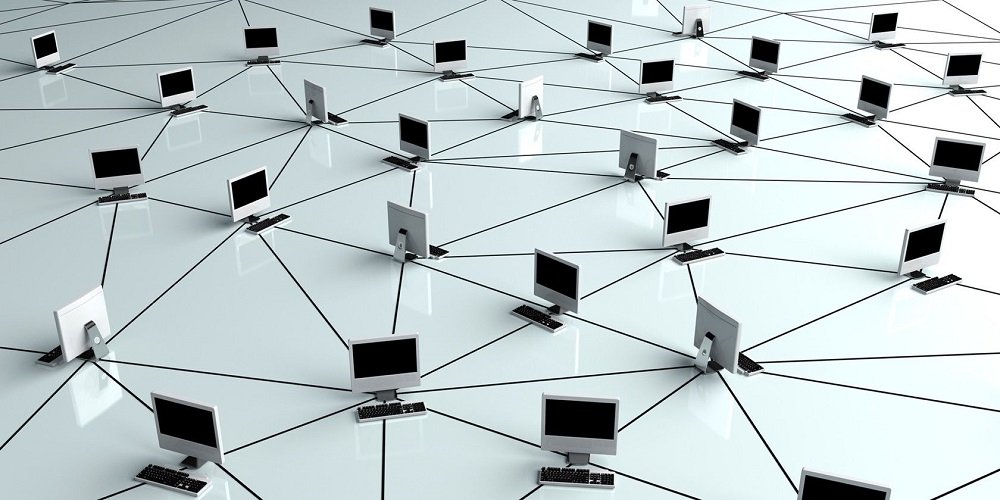
What Is P2P Network Sharing: An Informative Guide On This Technology
If you use the internet on a daily basis, you’ve almost certainly come across the word peer-to-peer or P2P. You may have come across this word in a news story, on TV, or in a chat with a buddy who told you that he just got the newest version of Linux using P2P.
But, do you know what it is? If your answer is NO, you should read this article. Just keep on scrolling down, and learn all about what peer-to-peer networks are, what they are used for, and what their benefits and drawbacks are.
What Is P2P Network Sharing?
Computer networks with a distributed design are referred to as peer-to-peer or P2P network sharing. All computers and devices that are part of a peer-to-peer network are referred to as peers, and they share and trade tasks.
In a peer-to-peer network, each peer is equivalent to others. There are no peers with special privileges, and there is also no central administrator server monitoring the file exchange. Similar to what happens in torrent websites like ipiratebay.org. Peer-to-peer networks are, in some ways, the most equal networks in the computer world.
Each peer is on an equal footing with the others and enjoys the same rights. At the same time, peers are both clients and servers. Without the need for a central server, every resource and asset accessible in a P2P network is shared among participants.

How Did P2P Originate?
USENET, which was created in 1979, appears to be the forerunner of peer-to-peer networks. It was a network system comparable to today’s online forums, except that USENET didn’t require a central server or administrator. Instead, USENET distributed the identical message/news to all network servers.
The year 1999 saw the birth of Napster, the next major thing in P2P history. It was Napster who brought P2P to the public. However, it failed in the end, and the governmental authorities shut it down due to all kinds of illegal file sharing.
P2P is one of the most popular technologies for legally and illegally transferring data over the internet to date.
What Is P2P Network Sharing Used For?
Peer-to-peer networks’ primary objective is to share resources and make it easier for computers and devices to collaborate and complete specific tasks. P2P, as previously stated, is a method of sharing computing resources such as processing power, network bandwidth, and disc storage space.
Peer-to-peer networks are great for file sharing because they allow computers linked to them to receive and transfer data concurrently.
The download is conducted differently when you download the identical content via a peer-to-peer network utilizing the BitTorrent platform as a starting point. The file is downloaded to your computer in pieces from many other computers on the same P2P network that already has the file or at least parts of it.
Simultaneously, the file is uploaded from your computer to other devices that require it. In a nutshell, the file is like a fleet of automobiles arriving at your PC and then leaving when others need it.

P2P Network Sharing Benefits
- It’s challenging to get rid of a P2P network, and that’s why so many sites like The Pirate Bay use it. Even if one of the peers is turned off, the others continue to function and communicate. To make a P2P network stop running, you must shut off all its peers, which is nearly impossible.
- Peer-to-peer networks have huge scalability. Furthermore, adding additional peers is simple as you don’t need to configure any central server setting to do this job.
- The larger a peer-to-peer network is, the faster it becomes. For example, when a P2P network has the same file saved on numerous peers and wants to download it, it is downloaded from multiple locations simultaneously, increasing its speed.
P2P Network Sharing Drawbacks
- P2P Network sharing is frequently utilized for illegal purposes. As it is commonly used for piracy, P2P is a contentious technology. However, because of the benefits of this technology, numerous websites on the internet provide access to protected content violating copyright laws.
- While the technology is not illegal in and of itself, it is often laced with malware files that can harm your computer. In addition, if you don’t have a strong antivirus, P2P network sharing can send phishing threats to your system.
- P2P networks often have very little security, which exposes you to all kinds of online spam risks. Unless you have a strong VPN that can mask your online identity, using a P2P platform can be risky.
The Bottom Line
P2P Network sharing is not a new technology, but it has undoubtedly reached its peak in the 21st century with such an increasingly high demand. We have covered almost every detail there is to know about this technology, so make sure you read the article thoroughly if you still have doubts in some areas.




